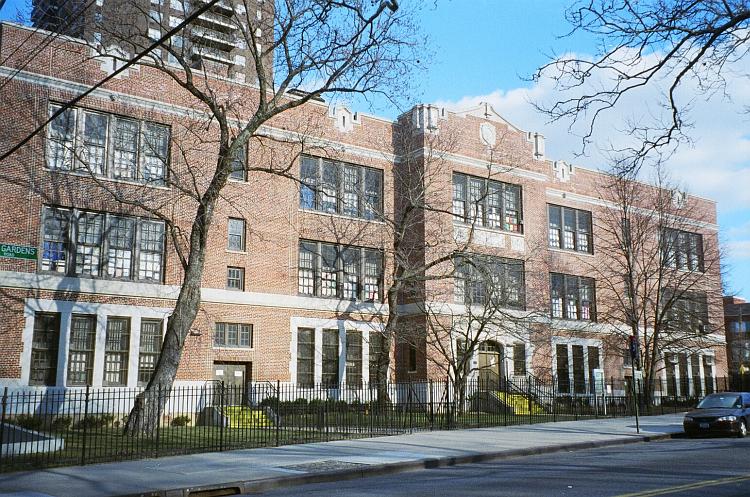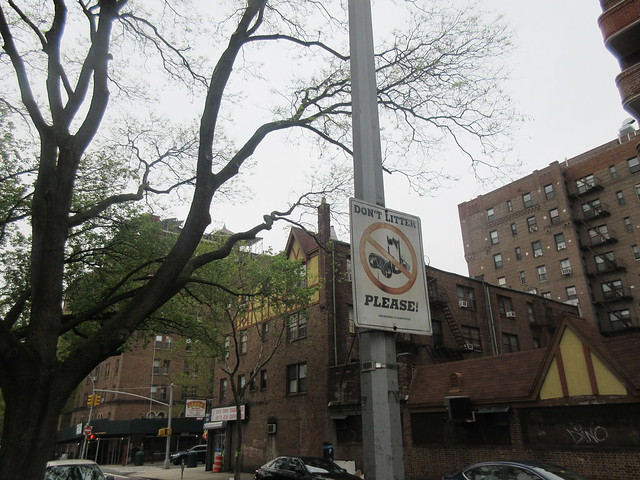Housing
Housing in Kew Gardens is very expensive. There is very high demand for the single-family homes because of their accessibility to the subway, making. One person we interviewed moved to Richmond Hill because his rent went up and because he needed space to start a family. He said that “there are no starter homes, only mansions.” This is because Kew Gardens was a planned community and was designed with more spacious homes-it was intended to be more exclusive.
Apartment buildings were constructed with the arrival of the subway. However, there are a limited number of apartments available on the market. One reason that housing has been harder to come by in Kew Gardens is because apartments have been converted to Co-Ops. According to an article from The New York Times from 1990, in the previous decade, more than half of the apartment buildings were converted to coops.1 This change is reflected in Census data. According to the 1970 Census, 87.2% of housing units (about 7,514) occupied were rented, while 12.8% were owned (about 1,104). According to the 2013-2017 American Community Survey, only 62.6% of housing units (6,351) were rented, while the remaining 37.5% were owned (3,803). 23
With the community continually fighting to ensure that the neighborhood’s character is preserved, meaning no out-of-context development, or taller buildings, there is little creation of new housing stock.
Schools

While Kew Gardens boasts no colleges or universities, it is home to several primary and secondary schools that are well-performing and positively reviewed by members of the community. The elementary school absenteeism rate for Queens Community District 9 (CD9), which includes Kew Gardens and Woodhaven, (17%) is lower than the rate for NYC overall (20%). Also, four out of five high school students in CD9 graduates in four years, which is similar to the citywide rate. 4
The only public school in Kew Gardens is P.S. 99, a primary school that serves students from kindergarten to sixth grade and offers programs for special needs students. For the 2018-2019 school year, 759 students were enrolled. 5 Of these students, 37.6% are Hispanic, 28.8% are white, 23.1% are Asian, 6.3% are black, 3.1% are multiracial, and 1.1% are American Indian. In addition, 12.7% of students are English learners (5.5% less than city average and close to district average), whereas 21.7% take advantage of special needs resources (4.3% more than district average and close to city average). 6 – P.S. 099 Kew Gardens. New York City Department of Education.] Students at P.S. 99 perform well compared to their peers citywide, performing in the top 25th percentile for ELA and math scores. As a result, the school is considered to be both high impact and high performance. 7 – P.S. 099 Kew Gardens. New York City Department of Education.]
The other primary and secondary schools in Kew Gardens have religious affiliations, including Yeshiva Tifereth Moshe, Bais Yaakov Academy for Girls, and Yeshiva Shaar Hatorah. There is also a full day preschool at Yeshiva Tifereth Moshe Day Care; 99-100% of families surveyed responded positively in regards to the daycare in several categories, ranging from cleanliness to safety. 8
According to the 2013-2017 American Community Survey, 71.6% of adults in Kew Gardens have a college degree, which is higher than the 43% of adults across the city with a college degree. In addition, almost 9% have not completed high school, a rate lower than the city average of 19%. 9
Crime
Kew Gardens is located in the 102nd Precinct. Even though Kitty Genovese’s brutal murder, which is mentioned in the Surprises and Serendipities section, took place in Kew Gardens, the area is pretty safe.
In the past few years, there has been an increase in antisemitic hate crimes in New York City, as experienced by a young Kew Gardens resident in May 2019. A 14 year old Jewish boy had been walking outside his yeshiva with some friends on 84th Avenue and 117th Street around 8:15 pm when he was attacked by a complete stranger. The stranger shouted “What are you looking at, you Jew Boy?” and proceeded to punch the boy in the face several times. 10
Even so, Kew Gardens is a generally safe neighborhood with a low to medium crime risk. From January to April 2019, the reported crimes in Kew Gardens included 148 counts of theft, 78 counts of assault, 13 counts of burglary, and 4 counts of robbery. 11 Overall, crime rates have decreased in Kew Gardens and surrounding neighborhoods over the past two decades. 12 The serious crime rate in Kew Gardens for 2018 was 5.2 serious crimes per 1,000 residents, less than the 11.3 serious crimes per 1,000 residents citywide. 13
- Brown, Frank (February 4, 1990). “If You’re Thinking of Living in: Kew Gardens”. The New York Times. Retrieved May 6, 2019. ↩
- Census 1970 on 2010 Geographies (Kew Gardens Census Tracts). Social Explorer. ↩
- ACS 2017 (5-Year Estimates) Kew Gardens Census tracts. Social Explorer. ↩
- QUEENS COMMUNITY DISTRICT 9 Kew Gardens and Woodhaven Including Kew Gardens, Ozone Park, Richmond Hill and Woodhaven Community Health Profiles 2018. New York City Health. ↩
- Find a School: P.S. 099 Kew Gardens. New York City Department of Education. ↩
- 2017-18 School Quality Guide – Online Edition 28Q099 [ES ↩
- 2017–18 School Performance Dashboard 28Q099 [ES ↩
- 2017-18 School Quality Snapshot BETA NYCEEC Pre-K. New York City Department of Education. ↩
- 2013-2017 American Community Survey Kew Gardens Census Tracts. Social Explorer ↩
- Exclusive: Hate Crime Investigation Underway After Jewish Boy Attacked In Queens. CBS 2 New York ↩
- Crime Data in Kew Gardens. Trulia ↩
- WOODHAVEN, RICHMOND HILL & KEW GARDENS. DNAinfo ↩
- NEW YORK CITY NEIGHBORHOOD DATA PROFILES. NYU Furman Center ↩


